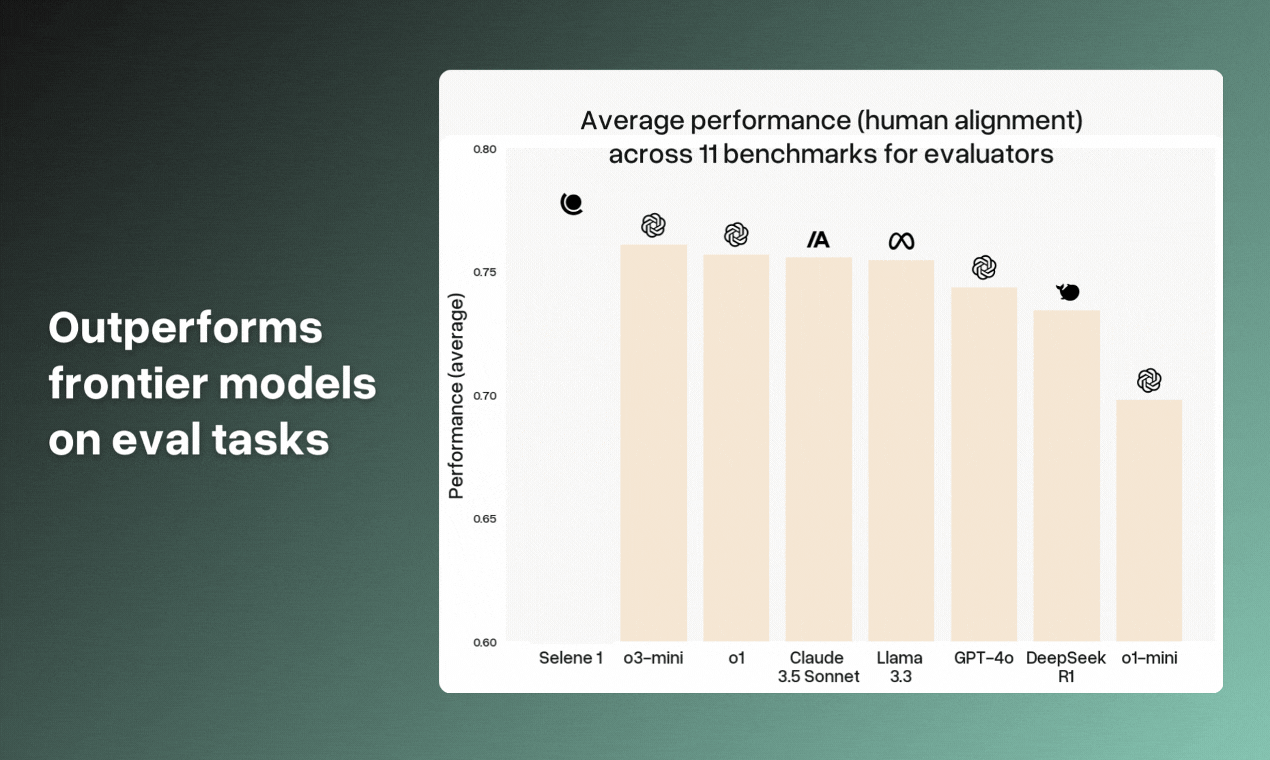Table of Contents
Overview
In the rapidly evolving world of artificial intelligence, ensuring the quality and reliability of AI-generated content is paramount. Enter Selene 1, an advanced evaluation tool designed to meticulously assess AI outputs. By leveraging the power of large language models (LLMs), Selene 1 provides developers and researchers with the insights they need to refine their AI models and achieve optimal performance. Let’s dive into what makes Selene 1 a standout solution for AI evaluation.
Key Features
Selene 1 boasts a robust set of features designed to provide comprehensive AI evaluation:
- LLM-as-a-Judge evaluation: Employs large language models to objectively assess the quality and relevance of AI-generated responses.
- Customizable evaluation metrics: Allows users to tailor evaluation parameters to specific project requirements and desired outcomes.
- API access for integration: Enables seamless integration with existing development workflows and automated testing pipelines.
- Alignment platform for tailored feedback: Provides a user-friendly interface for configuring evaluation criteria and receiving detailed feedback on AI performance.
- High accuracy in comparative assessment: Delivers precise and reliable comparisons between different AI models and outputs.
How It Works
Using Selene 1 is a straightforward process. Users submit AI-generated content to the system via its API. Selene 1 then leverages its LLM-based evaluation engine to analyze the content’s quality, coherence, and alignment with predefined criteria. The system returns detailed scores and actionable suggestions for improvement. Furthermore, users can fine-tune evaluation parameters through the Alignment Platform, ensuring the assessment aligns perfectly with their specific needs.
Use Cases
Selene 1’s versatility makes it applicable to a wide range of scenarios:
- AI model benchmarking: Compare the performance of different AI models to identify the most effective solutions for specific tasks.
- Quality assurance for AI-generated content: Ensure the accuracy, consistency, and appropriateness of AI-generated text, images, and other media.
- Research in AI alignment: Investigate and improve the alignment of AI systems with human values and goals.
- Product development testing: Evaluate the performance of AI-powered features during the development process to identify and address potential issues.
- Regulatory compliance verification: Verify that AI systems comply with relevant regulations and ethical guidelines.
Pros & Cons
Like any tool, Selene 1 has its strengths and weaknesses. Let’s break them down:
Advantages
- High-precision evaluations: Delivers accurate and reliable assessments of AI-generated content.
- Customizable and scalable: Adapts to diverse project requirements and scales to accommodate growing workloads.
- Enhances AI reliability: Improves the consistency and trustworthiness of AI systems.
- Strong integration capabilities: Seamlessly integrates with existing development workflows via API access.
Disadvantages
- Requires API setup: Initial setup requires familiarity with API integration.
- May have learning curve for custom evaluations: Configuring custom evaluation metrics may require some initial effort.
- Dependent on quality of LLM: The accuracy of evaluations depends on the underlying LLM’s capabilities.
How Does It Compare?
When considering AI evaluation tools, it’s important to understand how Selene 1 stacks up against the competition. Anthropic’s Claude evals are strong on safety aspects but offer less customization. OpenAI evals provide better integration with their own models, but lack the flexibility of Selene 1. Selene 1 distinguishes itself through its high precision, customizability, and strong integration capabilities, making it a versatile choice for developers and researchers.
Final Thoughts
Selene 1 offers a powerful and customizable solution for evaluating AI-generated content. Its LLM-as-a-Judge approach, combined with its flexible Alignment Platform and API access, makes it a valuable asset for developers, researchers, and organizations seeking to improve the quality, reliability, and alignment of their AI systems. While the initial API setup and potential learning curve for custom evaluations are worth considering, the benefits of high-precision evaluations and enhanced AI reliability make Selene 1 a compelling choice in the AI evaluation landscape.
